Beautifully decorated plot is the pride of any gardener and owner of a private house. That is why every spring and autumn can meet large crowds of people in the markets and in garden centers, which are in search of the most beautiful and unusual plants that can distinguish their garden or flower garden. To date, breeders are simply a huge number of colors and plants, among which each gardener will definitely find a suitable instance. Literally century ago, the Armerius flower was greatly popular - a beautiful flowering bush-shock, which is highlighted in a bright spot on any site.
Pink, red or white shades of inflorescences of this flower create one huge composition, especially if you plan them with a group. This will make it possible to achieve the similarity of your flower beds with the fragrant sea, consisting of gentle colors of the plants of Armeria.
In this article, consider the features and description of the Armery, we present the characteristics of the most popular species and varieties of this culture, as well as mention the most important moments of landing and care.
Features and description of the Armeria
Armeria is a herbaceous flowering plant, which refers to perennials. All plants of this culture are representatives of the Filty Family. In the past century, the Armery became very popular thanks to his bright and sophisticated appearance. In essence, the Armery is a frost-resistant decorative garden plant, which will certainly decorate any plot. In the culture of Armeriya is used from the 18th century and is still often found at the flower beds. Many amateur gardeners by mistake consider the birthplace of this culture of Armenia, which is consonant with the name of the Armery flower. However, this is a delusion, there is nothing in common with this plant and the eastern country. The territory of the Mediterranean is considered the natural area of \u200b\u200bthe habitat of the representatives of the Family Family, some species are also found in the countries of Eastern Europe, in America, Mongolia and Siberia.
Despite the rather long history of cultivation of the Armeria, the disputes on the history of origin of this amazing culture still do not subscribe to the history of origin. To date, there are two versions. According to some, the name of this flower Celtic origin. Translated from this language, "AR" means "near, near", and "Mor" - the sea, which literally can be translated as "next to the sea near the sea." This is due to the fact that most of the natural types and varieties of armeria grow on the coasts in the dunes. According to another version, the name of the flower happened from the French word Armoires, which in translation denotes the "bearded carnation". Looking at Armmeria, it is safe to say that there is a certain similarity between these two cultures, especially in a botanical aspect.
In nature, there is a large number of types of armeria. Botany scientists have them approximately 93, which are found in various territories of Europe and America, as well as in some areas of Asia. In culture, only a small part of the entire variety of armeria is grown - approximately 50 species.
Armeria description:
- Armery is a herbaceous plant for open soil, which is characterized by good resistance to our harsh frost.
- These plants botany belong to perennials, although many species and varieties can be cultivated as annual plants, provided that in winter the temperature drops below 15 degrees of frost.
- Armery is characterized by a rather short and not branched rod root system.
- Right from the root grow the leaves of culture, which form a beautiful and lush root rosette. Lancing leaves, linear with a solid edge, numerous, sit directly on the stem without a pet, which allows you to create a tight pillow.
- In the color of the foliage dark green, silver or purple.
- Single blundering shoots rose from the cushion of lancet leaves. They are straight, without foliage, dark green shade. Some varieties are smooth, there are sometimes flowers with a slightly pubescent flower.
- Heights are found both low-speed representatives, as well as higher and large. On average, the flower can rise to a height of 15-60 cm depending on the specific variety.
- On the tops of the shoots, small sound inflorescences are formed, which resemble small balls.
- Inflorescences are formed by small delicate flowers, which in diameter reach approximately 0.5 cm. In their form, these flowers resemble inflorescences of all known warded carnations.
- The main advantage of the Armeria is the simultaneous flowering of all colors, which makes the plant very spectacular. Blossom starts in May and can last until the end of summer.
- Color inflorescence can be different shades of purple, pink, red and white.
- Flowers self-pollined, after the end of flowering at the site of the bud is formed single-bedned fruit.
- This plant looks great in landscape design and is used for the design of flower beds, flower beds, mountaineering, rocaries.
Popular species and varieties of armeria for growing in the garden
In the gardens and at the flower beds, approximately 50 different types of armeria are grown, which are distinguished by different stem height, inflorescence color and frost resistance level. Consider the characteristics of the most popular species that gardeners use.
- Alpine Armeria. This is a perennial grassy plant that quickly grows and forms lush curtains, a height reaching about 15 cm. The flowers grow up to 30 cm, the tops of which are crowned with light-pink flowers collected in the commercial inflorescences. Inflorescences in diameter reach approximately 3 cm. The leaves of the plant can carry the winter under the condition of not strong frosts. This type of Armeria includes several popular varieties: Alba - flowers with white inflorescences, the Armeria with beautiful carmine-red inflorescences, Rosea - with bright pink flowers.
- Armeria Primorskaya. The plant is decorative, many years, height can reach about 20 cm. In nature, this flower grows in coastal dunes. The roots are formed a lush branch of bluish-green lanceolate leaves. Among the leaves, shoots or flowers are growing, on which the head inflorescences are formed, consisting of pinkish-lilac small flowers. Flowers have a plant so much that they are dense carpet asleep flower, closing even the leaves. The bloom of Armeria seaside begins in May and lasts only 10 days. Flowers of this species can bloom again in autumn. The main feature of Armeria Primorsky is a mandatory landing near the water branch. Popular varieties include: Bloxt - Armeria with dark red inflorescences, Louisiana - Plant with beautiful pink flowers, grade Elegy and magnificent, vinical - with red flowers.
- Armeria twins. This is a perennial grassy plant, which is growing in nature in the mountainous regions of Spain and Portugal. The flower height can reach 15 cm. Long lancetony leaves form a lush root rosette, which in diameter reaches about 20 cm. Floweros are low, only 6 cm in height are crowned with small heart-shaped inflorescences of a red or pink shade. Flowers are surrounded by overflower bracts. During flowering, a large number of colors bloom, sometimes there are no linear leaves for their density. Blossom begins in July and lasts for 45-50 days. Varieties: Brno - the plant is characterized by terry lilac flowers, Bivenz Väyeti - flowers with terry pale pink inflorescences.
- Armeria Velwich. This type of plant is characterized by the highest growth of all existing ones. Flowerons in height can reach about 35 cm. During flowering, large-hearted inflorescences are blooming, which are happy with their beauty longer than other varieties. Inflorescences consist of small pink flowers, which in diameter are approximately 2 cm. An important rule of growing this type of flower is the presence of a large amount of calcium in the soil.
- Armeria is beautiful. An herbal plant, which in height reaches about 40 cm. The roots are formed a root rosette from evergreen leaves. During flowering white or pink flowers bloom. Blossom starts at around the beginning of summer and lasts for 3 months. Popular varieties: Red Planet - Armeria with Red Inflorescences, White Joystick - Flower with white inflorescences that can be grown as an annual plant.
- Armeria ordinary or garden. An herbal perennial plant, which in height can reach about 60 cm. Lancing linear leaves can reach 12 cm, form a beautiful and lush rooting outlet. Long bare shoots are formed large sound inflorescences consisting of small carmine-red colors. On one plant there may be a large number of colors reaching about 40 pieces.
- Armeria barbed. This perennial plant in height can reach approximately 30 cm. The roasting socket is formed by lanceal linear leaves of a sidden shade. On the shoots blooming pink sound inflorescences.
- Armery Siberian. This is a rather rare species that is characterized by beauty blossom. In height, the herbaceous plant of Armeriya Siberian reaches about 30 cm. On the flowers in July, there are commercial spherical inflorescences, consisting of small colors, which are reached in a diameter of 0.5 cm. Pink shade flowers.
- Armeria is beautiful. Also a beautiful and amazing plant type. The root rosette is formed by long evergenic lanceal leaves of dark green. From the root rosettes grow strong shoots with sound inflorescences, in diameter reaching about 5 cm. Inflorescences consist of a large number of small colors of white, pink or red shade. Blossom starts at the beginning of summer and lasts to the most frosts.
Armeria reproduction: the most common ways
Armeria can easily be diluted on his own site. This culture can be multiplied by various ways: seeds, fission of rhizomes and cuttings. Each of the methods is distinguished by various peculiarities and technology of growing, which must be taken into account when solving, use one of them.
Seed reproduction of Armeria
- Armeria from seeds can be raised by self-sowing or work hard and collect seeds yourself. After biting the buds and the ripening of fruits, the seeds themselves differ independently around, so in the future they grow themselves and require only division every few years.
- If you want to plant this plant elsewhere, seeds can be assembled independently after bouting. For this, the required number of colors needs to wrap marks and wait for their full ripening.
- Armerian seeds can be sown directly into open ground or grow from them seedlings.
- In the open soil seeds are sown in autumn or early spring. With autumn landing, seeds pass natural stratification and in the spring together.
- With a seaside method, seeds are seeded in prepared containers in February or March. Before this, the seeds must be stratified for which the seed material is placed in the refrigerator for a week.
- Before planting seeds, you need to put in warm water for about 6-8 hours.
- Next you need to prepare containers with soil. On the surface, drink seeds and plump them slightly, the depth of the seal should be about 0.5 cm.
- Containers are placed in a bright and warm place before shooting. Armeria seeds are characterized by a good germination.
- After the appearance of the leaves, the seedlings need to be divened to the greenhouse soil. Here the plants are contained as long as they are not fixed.
- With a seaside process of growing, the Armery will bloom only for the second year if you sow seeds under the winter, possibly autumn flowering.
Reproduction of division
- This method is considered the most appropriate, as the adult plants of the Armery must often replant, it is desirable to do every fall.
- For division, the bushes of the Armery who have reached a three-year-old age are suitable.
- Immediately after flowering or a little later, you need to dig up adults and healthy curtains.
- After that, the root system must be divided into several parts, most often for three or five.
- In case of division, it is important to choose parts of the roots with healthy and strong roots without rot and dry processes.
- Next, at the most prepared place, prepare the wells and land the decene separately. It is important to comply with an acceptable distance that averages 15-20 cm.
- The decens of the Armery are quite good and do it best in the fall than in the spring.
- The young plant will bloom only for the second year, as the Armeria is a multi-year flower.
Pencornia reproduction
- This is another way with which you can independently distribute Armeria on your site.
- It is allowed to carry out over the summer period.
- To do this, it is necessary to prepare landing material. Young small outlets are taken as cuttings.
- In the warm season, the cuttings can be planted immediately into the open ground, only slightly sprinkled with the soil.
- However, in the cool period, it is best to plant cuttings in small greenhouses or put the planting with a film or plastic bottles.
- Young sockets are rouded quite quickly and do not give big problems.
Preparatory stages before landing Armeria in the ground
Armeria is a very beautiful and gentle plant, which has been popular among the gardeners for many years. This is quite unpretentious culture, however, it is important for its proper cultivation to clearly observe all the preparatory stages before landing of the Armeria. First of all, choose a method for producing plant seedlings, and also find the most suitable place and soil on your site.
Stage 1. Selection of armeria varieties and seedlings
- First of all, it is necessary to choose the right variety and planting material.
- Pay attention only to the zoned varieties that were grown in the climate of your city or settlement. So you will get more chances to successful cultivation of Armeria.
- Plant You can plant from self-collected seeds or take advantage of cuttings from an adult plant if it grows on your site or your acquaintances.
- If you do not want to trouble with the cultivation of seedlings, you can contact the garden center or agrofirm, which are professionally engaged in the cultivation of plant seedlings.
- Here you can get a competent advice on landing and care for a young plant, as each variety requires special attention.
- Saplings are sold in small containers with a closed root system. Often you can find seedlings with blooming inflorescences.
- Before buying, carefully check the seedlings, there should be no damage or signs of diseases. Leafs should be green and integer, without dry plots. The land in the container must be clean and wet.
Stage 2. Selection of Places for Landing
- Armeria is quite capricious regarding the place of cultivation, so it is important to carefully choose the right area for planting.
- This plant prefers to grow on well-lit plots without direct sunlight. The exclusion is the farmer's armeria, which can grow only in a shady spot.
- For landing is also suitable for a sexual or shady site.
- All varieties of culture love moistage soil, but can not grow in places of water stagnation.
- It is best to choose places on the slopes and small hills, near the ponds and reservoirs.
- Also an ideal place for Armeria will be the Alpine Hill, Rokaria, Stony Garden.
Stage 3. Choice and soil preparation for landing
- Optimal soil for landing of the Armeria is considered stony or sandy.
- It is also important that she was well drained and perfectly missed air and moisture.
- Be sure to pay attention to the acidity of the soil. The plant requires a weakly acidic reaction, so if it is alkaline, it is important to be treated with an ammonium acid.
- Before boarding, it is important to switch well and explode the selected area. It is done about two weeks before landing seedlings. At this time, it is also recommended to add organic fertilizers to the soil.
TECHNOLOGY OF ARMERY LANDING
- In the open soil, the seedlings of the Armeria are planted in the fall or in spring.
- First of all, it is important to prepare a landing space. Decide which composition you want to get in the end. If you are planning a single landing of the Armery, then observe the distance between the seedlings at 30-40 cm. If you need to get a flower leaf, seated with a solid carpet of the Armeria, then you need to dug out a small trench and plant seedlings at a distance of 10-15 cm apart.
- If no fertilizer was made during the preparation, it is important to add them by certainly at this stage.
- Next, you need to carefully remove seedlings from containers and planted into landing pits. It is important to place young plants on the same depth that they grew in tanks.
- Also when landing, follow the leaf rosette to the soil, and the root cerv should be in the surface.
- Saplings need to sprinkle soil and gently press their hands.
- The first three weeks, young plants must constantly pour out, withsting a small pause before the next irrigation.
Armeria Growing Agrotechnics: Secrets and Nuances of Care
Care for Armeria is not much difficult, since this plant is no capricious, so you will not be difficult to raise the beautiful Armeria on its plot. And when complying with all rules of growing, this plant will delight you with their delicate colors for a long time.
- Watering. Armeria refers to drought-resistant plants, so long time can do without watering. The exception is the first three weeks after planting young plants. In particularly hot summer, it is still worth paying attention to watering the plant and lightly irrigate the soil. However, it is necessary to monitor the volume of the injected water, since the armeria does not make stagnation of moisture in the roots, which is why the flower can perish.
- Swimming. Flowers love to grow in light and loose soil, so it is periodically recommended to loosen the soil around the armeria. This will provide access to the roots of oxygen and moisture. Also pay attention to the extension of flowering, which is ensured by removing the shockless buds.
- Feeding If you contributed organic fertilizers and a complex of minerals, then the first time the Armery does not need feeding. In the future, feeding is carried out before the start of flowering, and then twice after flowering. It is recommended to use complete mineral fertilizers as fertilizers. Their contribution is not necessary, but without fertilizer, the Armery will bloom quite poorly and not long.
- Fighting diseases and pests. A distinctive feature of the Armeria from many other blooming herbaceous plants is that this culture has good resistance to diseases and pest appearance. The exceptions are cases when the plant is planted in a lime soil. Then it may be affected by spotting, with which it is difficult to fight and needs to complete the shoots.
- Zimovka Armeria. The armeria is considered a frost-resistant plant, so if there are snow, it can be perfectly done without shelter. The exception is the farmer's armeria, which will die without shelter. If the winter forecasts have a minor, the plants are better to hide. To do this, use the huskien.
Photo of Armeria in Landscape Design
Armery is a very beautiful and unique plant, which looks great both in single landings and solid flowering carpet. Many gardeners use this culture to create an unusual alpine slide and rocaries.
Having put on his plot of delicate Armeria, you will admire the bright and beautiful flowers for a long time, which are covered with a dense carpet all the landing site.

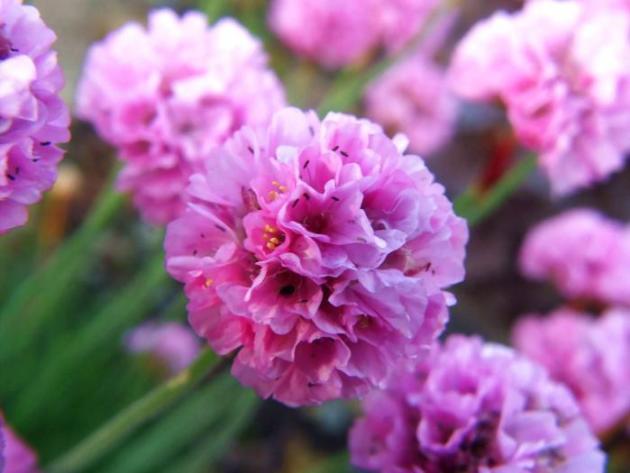
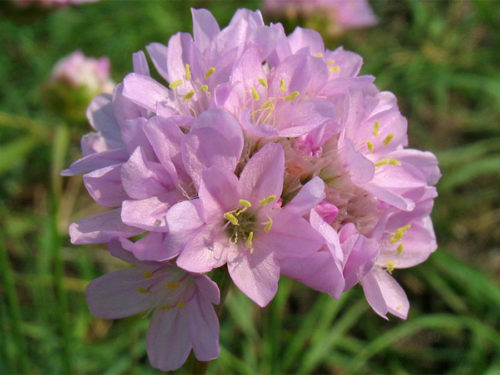
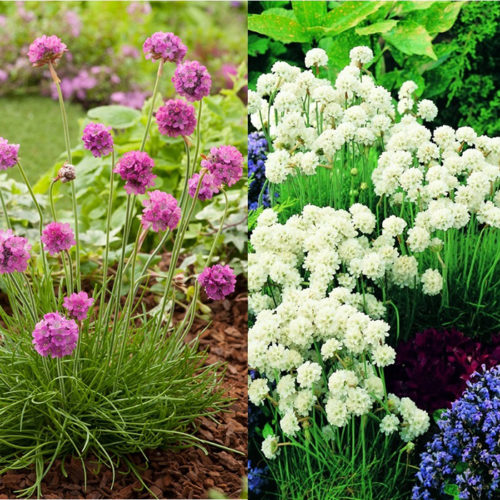

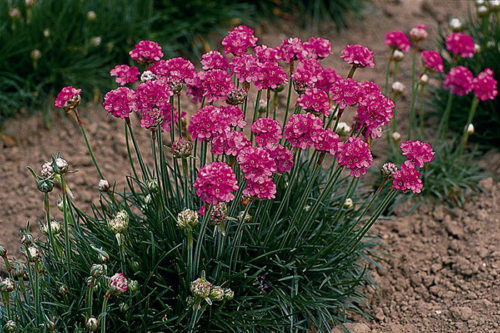

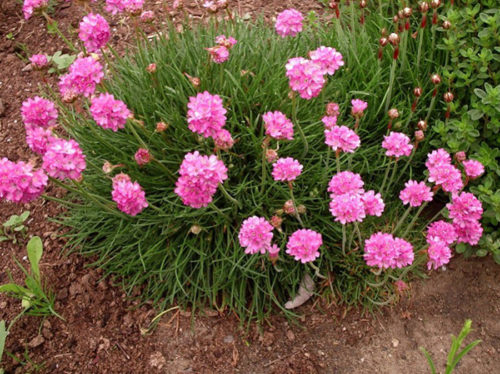
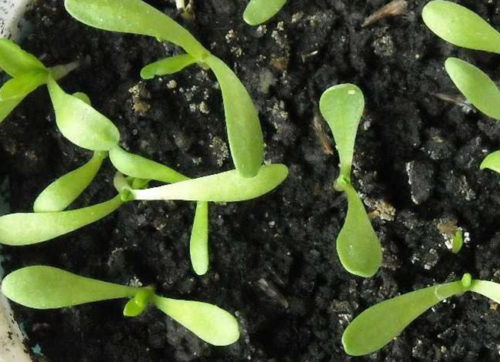
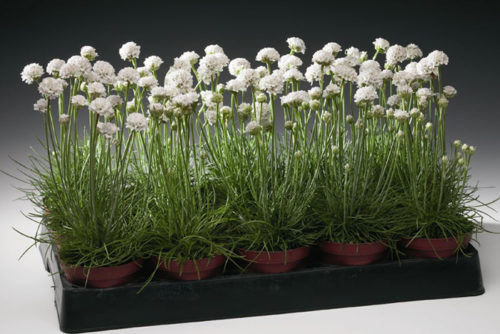
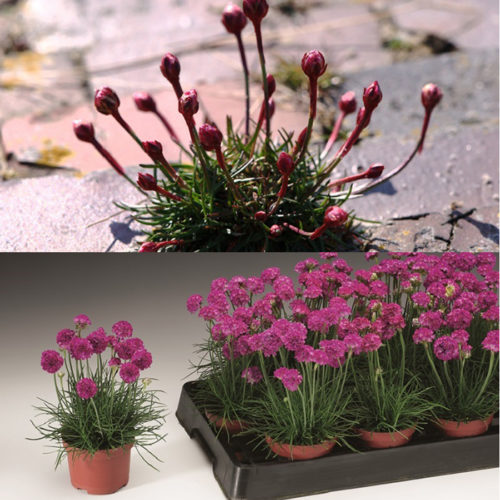
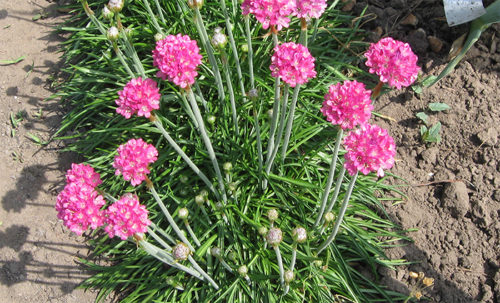
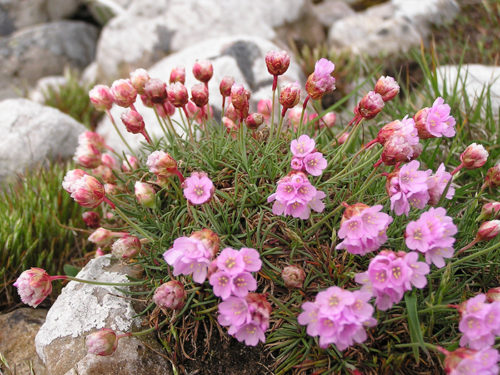
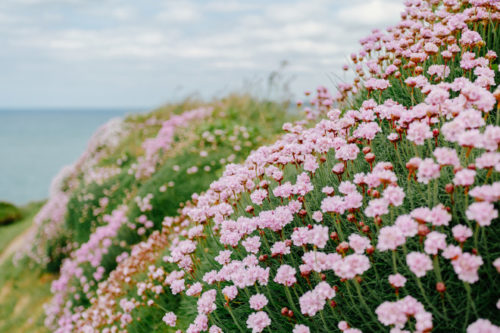

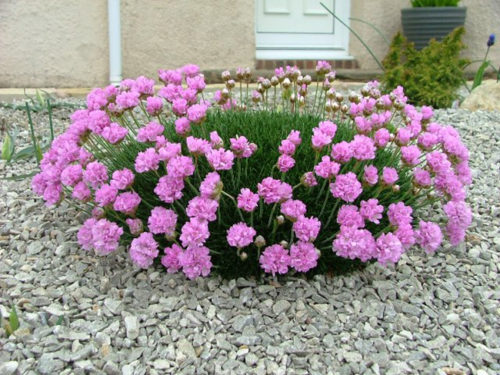
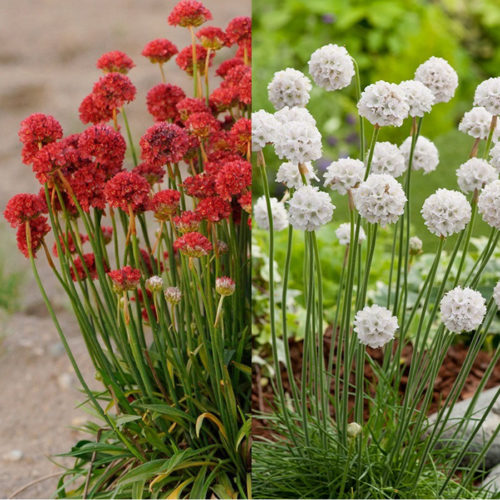












 Start a discussion ...
Start a discussion ...